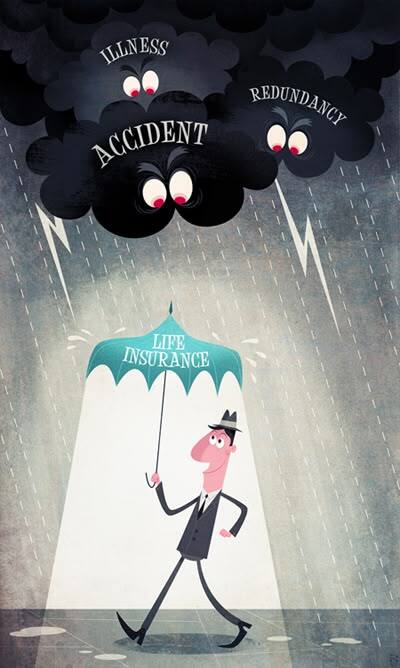
Why Life Insurance Is Key to a Complete Emergency Plan
Beyond savings & health coverage.
Most people recognize the value of having an emergency plan. Whether it’s a natural disaster, job loss, or health issue, being prepared can make a meaningful difference. These plans often include savings, medical records, evacuation routes, and essential supplies. Yet many overlook one critical element: life insurance.
It’s not easy to think about worst-case scenarios, but planning ahead matters. If a loved one—especially a provider or caregiver—passes away unexpectedly, the emotional toll is already high. Life insurance helps prevent financial strain from making it worse. It’s more than just a financial product; it’s an essential part of a truly complete emergency plan.
The Unique Role of Life Insurance
Life insurance offers something that other emergency tools can’t—financial protection for your loved ones when you're no longer there to provide it. While emergency savings or health coverage help in the moment, life insurance is focused on what happens after. That long-term support is what makes it essential to any well-rounded emergency plan.

But not all policies are the same. Your age, responsibilities, and financial goals all play a role in choosing the right coverage. That’s why it’s important to understand the different types of life insurance, each designed to meet specific needs—from short-term financial protection to lifetime coverage.
What sets life insurance apart is its purpose. It’s not there to assist you during an emergency, but to ease the burden on the people you care about. It can help cover funeral costs, pay off debts, and provide for day-to-day living expenses, giving your family stability at a time when they need it most.
Understanding Emergency Planning
An emergency plan is your personal safety net. It’s what you rely on when life takes a sudden turn. For many, this includes a stash of cash, insurance for health or property, and a list of contacts or support resources. But even the best emergency kit won’t protect your family financially if someone passes away unexpectedly.
Think of emergency planning as a way to reduce chaos when the unexpected happens. That includes physical safety, emotional support, and financial stability. Too often, people focus only on the short-term aspects, like having food or power backup, and forget about the long-term challenges that can follow a major life event.
Life insurance doesn’t prevent emergencies, but it helps reduce their long-term impact. If your emergency plan is meant to protect your family, then it should also protect their financial future. That’s exactly what life insurance does.
Unlike savings or health insurance, life insurance can deliver a large financial cushion right when it’s needed most. That’s something other tools can’t always offer.
Financial Impact of Losing a Loved One

Losing someone you care about is always hard. But beyond the emotional pain, there’s often a serious financial impact, especially if that person contributed to the household income or managed day-to-day responsibilities.
Funerals alone can cost thousands of dollars. On top of that, there might be medical bills, mortgage payments, credit card debt, or car loans to deal with. If children are involved, things like school tuition, child care, and basic needs can become overwhelming.
Without life insurance, families often have to dip into savings, take out loans, or rely on crowdfunding. This kind of financial strain can make a difficult time even harder. Life insurance helps take that pressure off. It gives loved ones the support they need to stay afloat, take time to heal, and avoid making rushed financial decisions.
Life Insurance and Other Emergency Tools
A good emergency plan includes more than one layer of protection. For example, an emergency fund can cover immediate needs like rent, groceries, or repairs. Health insurance helps with medical costs. Disability insurance can step in if someone is injured and can’t work. Each of these tools serves a different purpose.
Life insurance fits into this system by addressing a need that nothing else can: financial support after a death. It’s the piece that covers long-term stability, not just short-term survival.
Together, these tools create a safety net that protects your family from many angles. Skipping life insurance is like leaving a hole in that net, one that could open at the worst possible moment.
Life Insurance for Different Life Stages

People at different stages of life have different reasons to include life insurance in their emergency plans.
Young adults may think they don’t need coverage yet, especially if they’re single. But even a small policy can help cover student loan debt, funeral costs, or other final expenses, relieving stress for parents or other family members.
Parents, especially those with young children, often carry the biggest responsibilities. If something happened to one parent, the surviving family would still need income to cover rent or a mortgage, school fees, and day-to-day needs. Life insurance ensures those bills can still be paid.
Older adults may use life insurance for different reasons, like leaving a financial gift for their children or covering the costs of a funeral so it doesn’t become a burden. Some even use it as part of their estate planning.
No matter your age or income level, there’s usually a way to include life insurance in your emergency plan. It’s about protecting the people you care about most.
Common Misconceptions That Put Families at Risk
Many people skip life insurance because they believe certain myths. Here are a few that can lead to big problems later:
- I’m too young to need life insurance.
In reality, the younger and healthier you are, the cheaper your premiums will be. Waiting only makes it more expensive—and in some cases, harder to qualify. - I have enough in savings.
Even a solid emergency fund might not cover everything. Life insurance provides a much larger lump sum that’s specifically designed to replace income and cover big expenses. - My work policy is enough.
Many jobs offer basic life insurance, but those policies are often small and tied to your employment. If you leave the job, the coverage usually ends. A personal policy stays with you.
Believing these myths can leave families unprotected when they need help the most. Taking the time to get accurate information can make a huge difference.
An emergency plan is about more than just getting through the moment—it’s about protecting your future and your family’s future. Life insurance plays a critical role in that plan. It’s not something people like to think about, but it’s something they’ll be glad they planned for.
Adding life insurance to your emergency strategy isn’t just about money. It’s about making sure your loved ones are supported, even when you can’t be there. It gives them the time, space, and security they need to move forward.
If you’ve been putting it off, now is a good time to take a closer look. A complete emergency plan should cover everything—and that includes life after loss.











